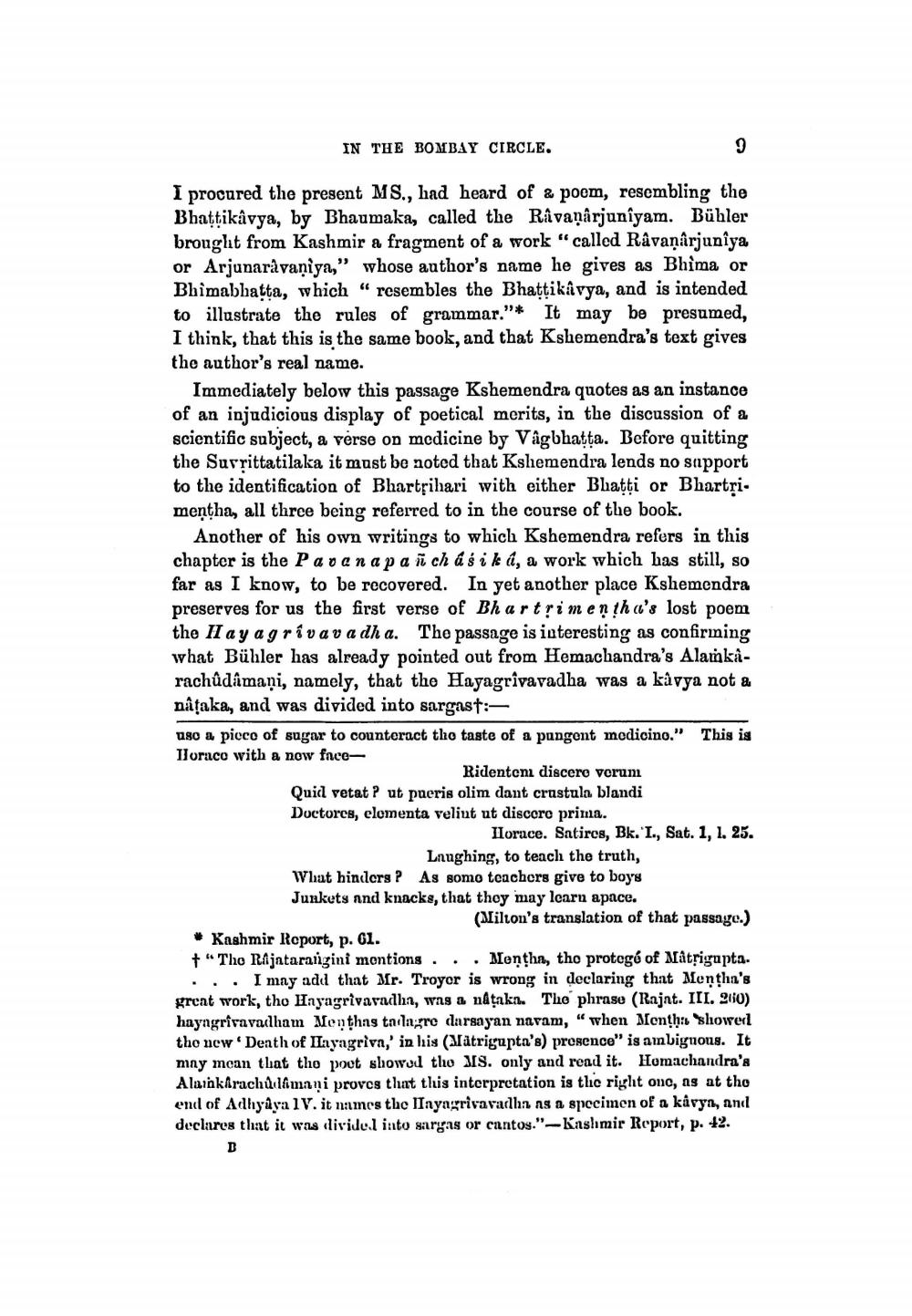________________
IN THE BOMBAY CIRCLE.
I procured the present MS., had heard of a poem, resembling the Bhattikävya, by Bhaumaka, called the Ravaņârjuniyam. Bühler brought from Kashmir a fragment of a work "called Râvaņârjunîya or Arjunarávaniya,” whose author's name he gives as Bhima or Bhimabhatta, which “ resembles the Bhattikävya, and is intended to illustrate the rules of grammar."* It may be presumed, I think, that this is the same book, and that Kshemendra's text gives the author's real name.
Immediately below this passage Kshemendra quotes as an instance of an injudicious display of poetical merits, in the discussion of a scientific subject, a verse on medicine by Vâgbhatta. Before quitting the Surrittatilaka it must be noted that Kshemendra lends no support to the identification of Bhartrihari with either Bhatti or Bhartři. mentha, all three being referred to in the course of the book.
Another of his own writings to which Kshemendra refers in this chapter is the Paranapa ñch áśiká, a work which has still, so far as I know, to be recovered. In yet another place Kshemendra preserves for us the first verse of Bhartrimen tha's lost poem the II ay agrivav a dh a. The passage is interesting as confirming what Bühler has already pointed out from Hemachandra's Alarakarachûdâmaņi, namely, that the Hayagrivavadha was a kávya not a nataka, and was divided into sargast:uso a piece of sugar to counteract the taste of a pungent medicino." This is lloraco with a now free
Ridentem discere verum Quid vetat ? ut pueris olim dant crustula blandi Doctores, elementa velint ut discere prima.
Horace. Satires, Bk.'I., Sat. 1, 1. 25.
Laughing, to teach the truth, What hinders? As some teachers give to boys Junkets and knacks, that they may learn apace.
(Milton's translation of that passage.) • Kashmir Report, p. 61. + "The Rajatarangini mentions... Mentha, the protege of Mâtrigupta. ... I may add that Mr. Troyer is wrong in declaring that Mentha's great work, tho Hayagrivavadha, wag a nataka. The phrase (Rajnt. III. 2010) hayngrivavadham Menthas ta lagre darsayan navam, “when Month: Shower! the new Denth of Inyagriva,' in his Matrigupta's) presence" is ambiguous. It mny mean that the poet showed the MS. only and read it. Homachandra's Alankaracha Amani proves that this interpretation is the right one, as at tho end of Adhyâya 1V. it names the Hayagrivavadha is a specimen of a kávyn, and declares that it was divided into saryas or cantos."- Kashmir Report, p. 42.
B




